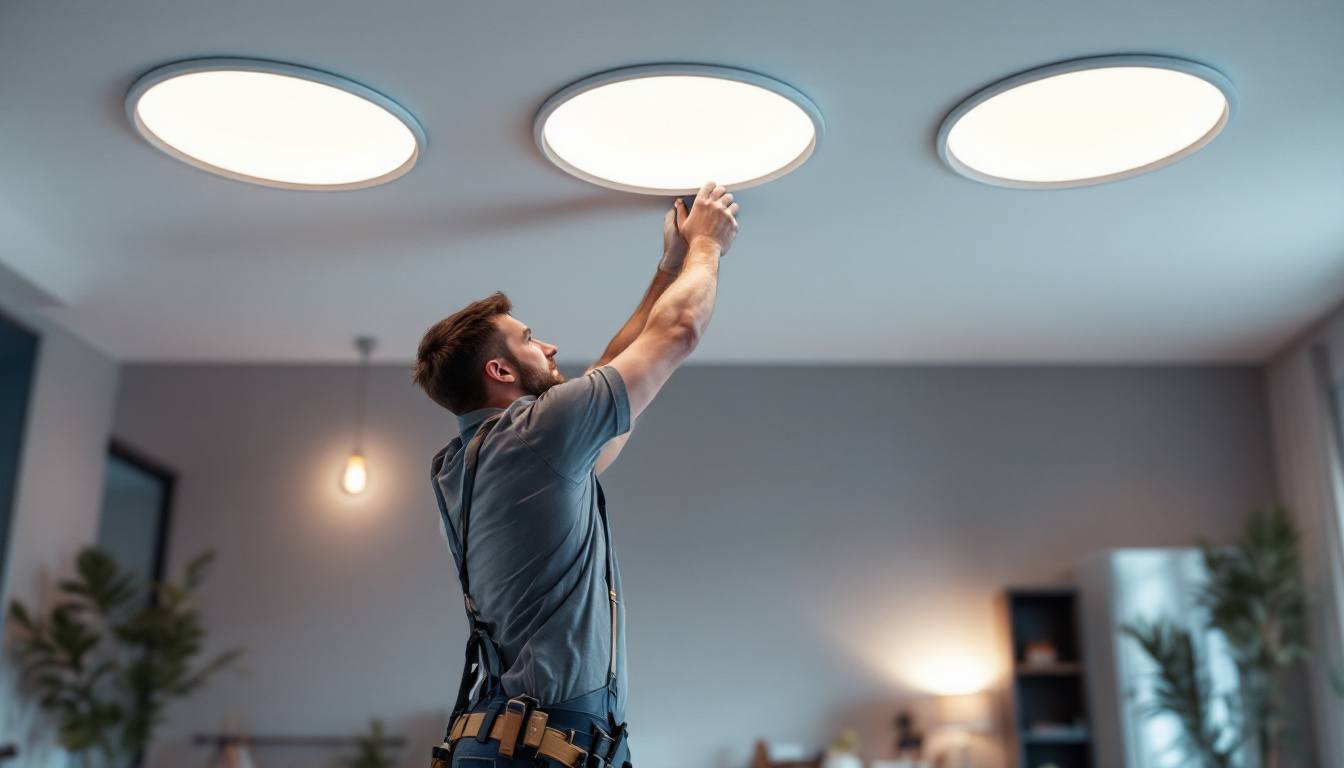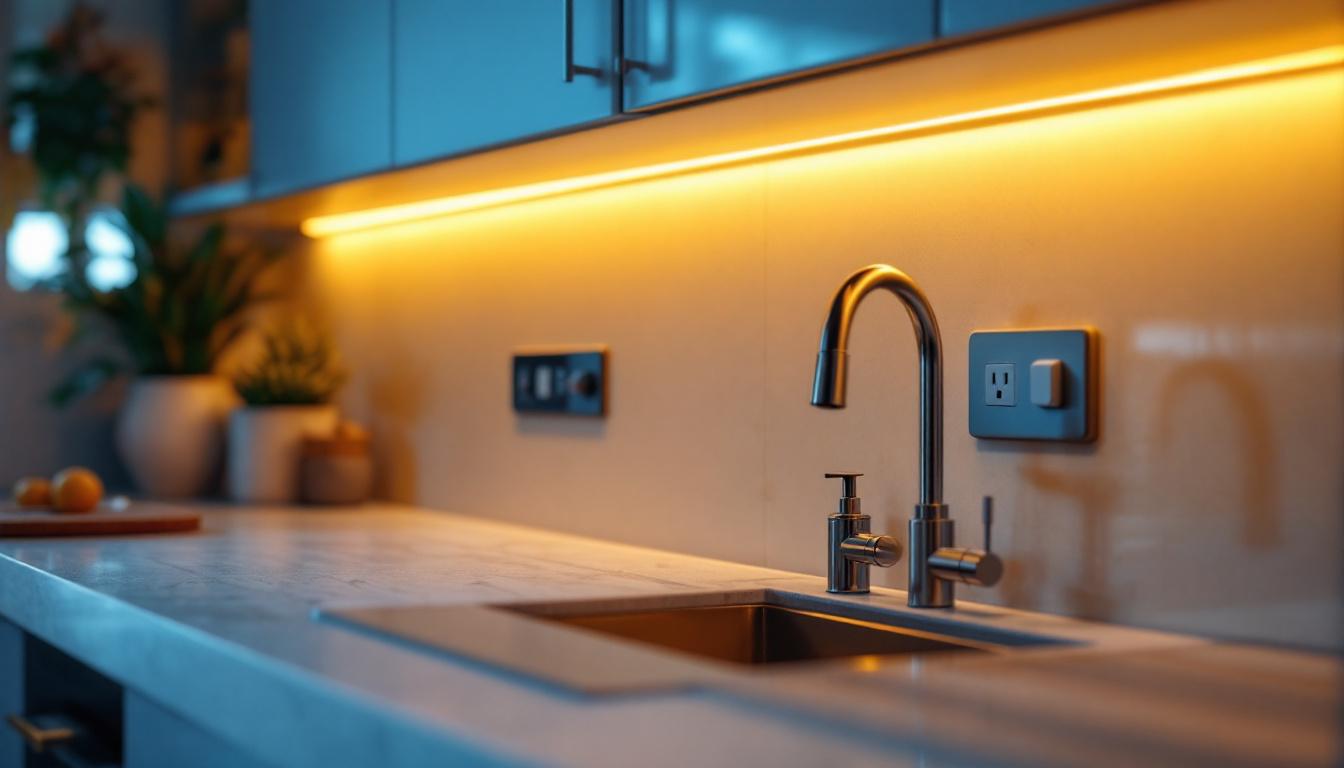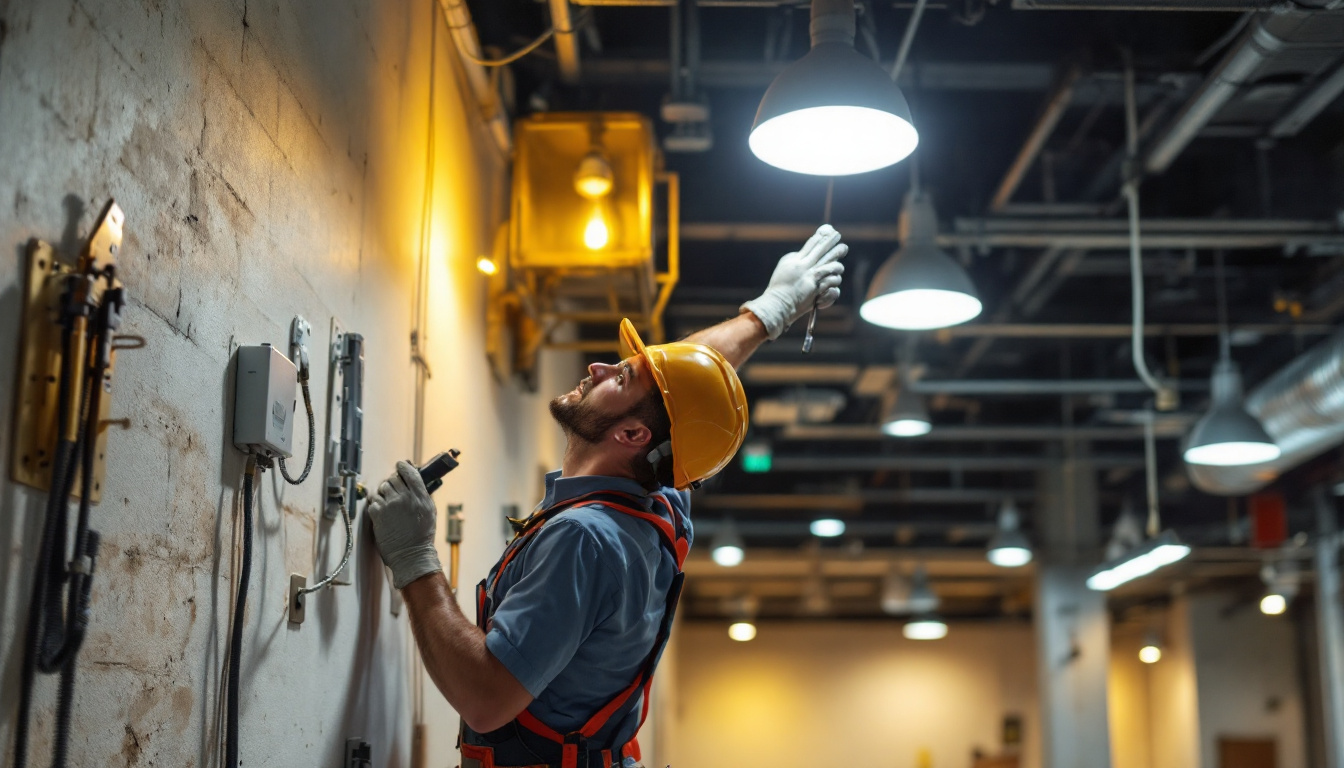
In the ever-evolving world of lighting design, recessed LED lights have emerged as a favored choice among lighting contractors. Their sleek appearance, energy efficiency, and versatility make them ideal for a variety of applications, from residential to commercial spaces. This article delves into the best practices for selecting and installing recessed LED lights, ensuring that lighting contractors can provide their clients with optimal solutions.
Recessed LED lighting, often referred to as can lights or downlights, is designed to be installed into a hollow opening in the ceiling. This type of lighting offers a clean, modern look while providing effective illumination. Understanding the components and types of recessed LED lights is essential for any lighting contractor.
Recessed LED lights consist of several key components: the housing, trim, and the LED module. The housing is the part that is installed in the ceiling, providing a structure for the light fixture. It comes in various sizes and types, including new construction and remodel housings. New construction housings are typically used when building a new home or during significant renovations, while remodel housings are designed for retrofitting into existing ceilings without extensive modifications.
The trim refers to the visible part of the fixture that can be customized in different styles and finishes. This allows for aesthetic flexibility, enabling contractors to match the lighting with the overall design of the space. Trims can vary from baffle trims, which help reduce glare, to reflector trims that enhance brightness. Finally, the LED module is the light source itself, which can vary in brightness and color temperature. Many LED modules now offer dimming capabilities, allowing users to adjust the light intensity to suit their mood or activity.
There are several types of recessed LED lights available, each suited for different applications. Some common types include:
In addition to these common types, there are also specialized recessed LED lights such as high-hat lights, which are often used in commercial settings for task lighting, and color-changing recessed lights that can be adjusted to create dynamic lighting effects for events or parties. Moreover, the integration of smart technology in recessed lighting has become increasingly popular, allowing homeowners to control their lighting through mobile apps or voice commands. This advancement not only enhances convenience but also promotes energy efficiency, as users can easily turn off lights in unoccupied rooms or adjust the brightness based on the time of day.
When selecting recessed LED lighting, it is crucial to consider the ceiling height and the intended purpose of the lighting. For instance, higher ceilings may require fixtures with higher lumen output to ensure adequate illumination. Additionally, the spacing of recessed lights plays a vital role in achieving an even distribution of light, preventing dark spots and ensuring a well-lit environment. By carefully planning the layout and choosing the appropriate types of recessed lights, contractors can create spaces that are not only functional but also visually appealing.
Recessed LED lights offer numerous advantages that make them a preferred choice for both contractors and clients. Their benefits extend beyond aesthetics, impacting energy consumption and maintenance as well.
One of the most significant advantages of recessed LED lights is their energy efficiency. Compared to traditional incandescent bulbs, LEDs consume significantly less energy while providing the same level of brightness. This efficiency translates to lower electricity bills for clients and a reduced carbon footprint.
LED lights have an impressive lifespan, often lasting up to 25,000 hours or more. This longevity means fewer replacements and lower maintenance costs for clients. Additionally, LEDs are more durable than traditional bulbs, as they are less prone to breakage and damage.
Recessed LED lights come in various styles, sizes, and finishes, making them suitable for diverse design schemes. Whether the project calls for a minimalist look or a more decorative approach, there are options available to meet the aesthetic requirements of any space.
Selecting the appropriate recessed LED lights involves considering several factors, including the intended use, desired brightness, and color temperature. Lighting contractors must be equipped with knowledge to guide their clients in making informed decisions.
Brightness is measured in lumens, and understanding the required lumen output is crucial for achieving the desired lighting effect. For general lighting, a range of 100 to 300 lumens per square foot is typically recommended. For task lighting, such as in kitchens or workspaces, higher lumens may be necessary.
Color temperature, measured in Kelvin (K), affects the ambiance of a space. Lower temperatures (2700K to 3000K) produce a warm, cozy glow, ideal for living areas and bedrooms. In contrast, higher temperatures (4000K to 5000K) yield a cooler, more energizing light, suitable for kitchens and offices. Understanding these nuances allows contractors to tailor lighting solutions to their clients’ preferences.
Proper installation of recessed LED lights is essential to ensure optimal performance and aesthetics. Following best practices can help lighting contractors avoid common pitfalls and deliver high-quality results.
Before installation, planning the layout of recessed lights is critical. Consider the room’s dimensions, furniture placement, and the desired lighting effect. A well-thought-out layout ensures even distribution of light and minimizes shadows.
Using a lighting design software or app can aid in visualizing the layout and determining the appropriate spacing between fixtures. Generally, recessed lights should be spaced between 4 to 6 feet apart, depending on the brightness of the LEDs and the room’s height.
When installing recessed lights, it is vital to ensure that there is adequate clearance around the housing. This is particularly important for insulation, as overheating can occur if the fixture is not properly ventilated. Many recessed LED fixtures come with IC (Insulation Contact) ratings, allowing them to be installed in contact with insulation, which can be beneficial in energy-efficient designs.
Lighting contractors may encounter various challenges when working with recessed LED lights. Being prepared with solutions can help streamline the installation process and enhance client satisfaction.
One common issue with recessed LED lights is compatibility with dimmer switches. Not all LED fixtures work seamlessly with existing dimmers, leading to flickering or buzzing sounds. To avoid this, it is essential to select dimmable LED fixtures and ensure that the dimmer switch is compatible with LED technology.
Color consistency can be a concern, especially when using multiple fixtures in a single space. Variations in color temperature can create an uneven look. To mitigate this, contractors should source all fixtures from the same manufacturer and batch to ensure uniformity in color output.
While recessed LED lights require less maintenance than traditional lighting options, occasional issues may arise. Understanding basic troubleshooting techniques can save time and enhance service quality.
Flickering recessed LED lights can be caused by several factors, including loose connections, incompatible dimmers, or voltage fluctuations. Checking the wiring connections and ensuring compatibility with dimmer switches can often resolve the issue.
Keeping recessed LED lights clean is essential for maintaining their brightness and overall appearance. Dust and debris can accumulate on the trim and lens, affecting light output. A gentle cleaning with a soft cloth and mild cleaner can help preserve the fixtures’ integrity.
The lighting industry is continuously evolving, with new technologies and trends shaping the future of recessed LED lighting. Staying informed about these developments can help lighting contractors remain competitive and innovative.
Smart lighting technology is becoming increasingly popular, allowing users to control their lighting through mobile apps or voice commands. Integrating smart controls with recessed LED fixtures can enhance user experience and provide added convenience. Contractors should familiarize themselves with smart lighting options to offer clients cutting-edge solutions.
Human-centric lighting focuses on creating environments that support human well-being. This approach considers factors such as circadian rhythms and the psychological effects of light. Recessed LED lights can be designed to mimic natural light patterns, promoting productivity and comfort in residential and commercial settings.
Recessed LED lighting presents a myriad of opportunities for lighting contractors to enhance their projects. By understanding the components, benefits, and best practices associated with these fixtures, contractors can deliver exceptional lighting solutions that meet their clients’ needs. As the industry continues to evolve, staying informed about emerging trends will ensure that contractors remain at the forefront of lighting innovation.
Incorporating recessed LED lights into designs not only elevates the aesthetic appeal of spaces but also contributes to energy efficiency and sustainability. With the right knowledge and skills, lighting contractors can successfully navigate the complexities of recessed LED lighting, providing clients with beautiful, functional, and efficient lighting solutions.
Ready to take your lighting projects to the next level? At LumenWholesale, we provide lighting contractors with the highest quality recessed LED lights at unbeatable wholesale prices. Say goodbye to local distributor markups and hello to our spec-grade lighting products that meet the highest industry standards. With free shipping on bulk orders, you can trust that you’re getting premium lighting solutions at the best value — no hidden fees, no compromises. Elevate your lighting designs with the perfect blend of quality, affordability, and convenience. Visit LumenWholesale today and experience Wholesale Lighting at the Best Value for your next project.

Discover how different types of bulbs can significantly influence energy efficiency in your home or office.

Discover the essentials of under cabinet lighting with outlets in this comprehensive guide for lighting contractors.

Discover the essentials of LED retrofitting with our comprehensive guide tailored for lighting contractors.

Discover the essentials of can lights and learn how to avoid common pitfalls with our comprehensive guide tailored for lighting contractors.